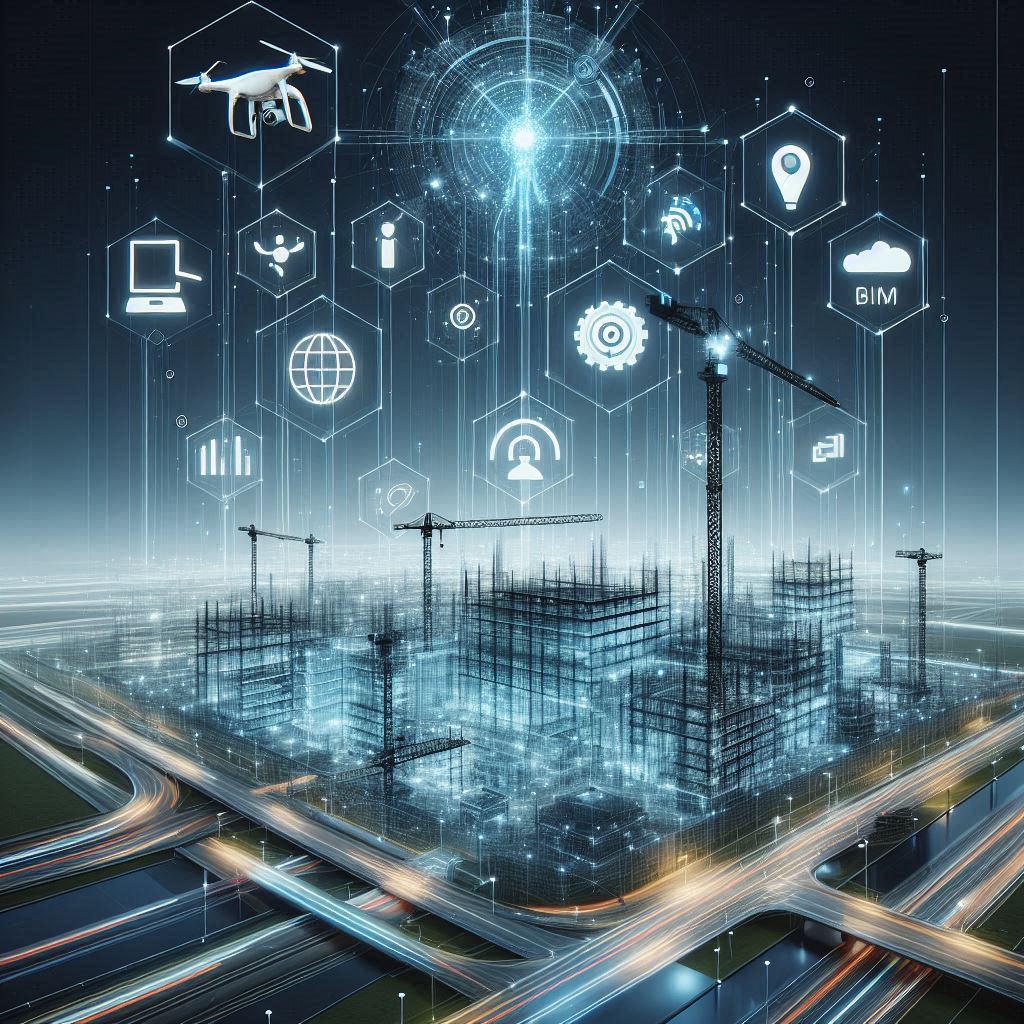The Main Idea
This research explores how emerging technologies like AI, BIM, Digital Twins, and UAVs are transforming Australia's construction industry by improving safety, efficiency, and cost-effectiveness while identifying key adoption challenges and future prospects.
The R&D
The construction industry is the backbone of Australia’s economy 🇦🇺, but it faces major hurdles—rising costs, safety risks, project delays, and a growing skills shortage. In fact, the industry has lagged in adopting cutting-edge technologies compared to other sectors, leading to inefficiencies that cost billions annually. However, the future is looking brighter! Thanks to emerging technologies such as Artificial Intelligence (AI), Building Information Modeling (BIM), Digital Twins (DT), Virtual Reality (VR), Augmented Reality (AR), sensors, and drones (UAVs), Australia’s construction sector is on the brink of a transformation.
A recent study explores how these technologies are reshaping construction in Australia, their adoption challenges, and what the future holds. Let’s dive in! 🏗️✨
The State of Construction in Australia 🏢
The Australian construction industry is one of the largest economic contributors, yet it has seen productivity decline by 1.6% since 1990, while most industries have grown by 35%. This stagnation costs the economy $47 billion every year. Some key issues include:
✅ A deficit of 105,000 skilled professionals 🏗️
✅ Work-related injuries and illnesses costing $28.6 billion annually ⚠️
✅ A burden of $6.2 billion from rectifying construction defects 💰
The sector desperately needs modernization, and that’s where digital transformation comes in.
How Emerging Technologies Are Changing the Game 🎮
1️⃣ Artificial Intelligence (AI) 🤖
AI is bringing intelligence and automation to construction by:
- Enhancing safety 🦺: AI can predict potential hazards and prevent accidents.
- Reducing delays ⏳: AI-driven scheduling improves project timelines.
- Cutting costs 💰: AI analyzes data to optimize material usage and prevent overruns.
2️⃣ Building Information Modeling (BIM) 🏗️
BIM is a game-changer for project planning, design, and collaboration. It allows:
- Accurate 3D visualization 🏢
- Efficient resource management 📊
- Early detection of design errors 🛑
3️⃣ Digital Twins (DT) 🏡💻
DT creates a real-time digital replica of a construction site, allowing engineers to:
- Predict potential failures 🔍
- Optimize performance ⚙️
- Improve safety measures
4️⃣ Virtual Reality (VR) & Augmented Reality (AR) 🥽
Immersive technologies make construction more interactive and efficient:
- VR-based safety training minimizes on-site risks 🚧
- AR overlays help workers visualize structures before building them 📏
- Real-time monitoring of structures 🏗️
- Detects defects early 🧐
- Improves construction quality 💪
6️⃣ Drones (UAVs) 🛸
- Faster site inspections 🚀
- Enhanced security monitoring 📷
- Improved surveying accuracy 🎯
The Challenges of Tech Adoption 🤔
While these technologies have immense potential, their adoption is slow due to:
- High costs 💰: Advanced technologies require significant investment.
- Resistance to change ⛔: Many companies prefer traditional methods.
- Lack of skilled workforce 📉: Training gaps prevent full-scale adoption.
- Regulatory uncertainties 🏛️: Policies around new technologies are still evolving.
The Future of Construction in Australia 🌏
Despite these challenges, the future looks promising. The research predicts:
✅ Greater AI-driven automation to streamline operations.
✅ Wider adoption of Digital Twins to enhance construction efficiency.
✅ Increased use of VR/AR for immersive planning and training.
✅ Expansion of IoT & smart sensors for real-time project monitoring.
✅ Government-backed tech incentives to push digital adoption.
Final Thoughts 💡
The construction revolution in Australia is just beginning. While emerging technologies face adoption barriers, their benefits far outweigh the challenges. With strategic investments, training, and regulatory support, the construction industry can boost productivity, improve safety, reduce costs, and meet future demands.
Concepts to Know
- Artificial Intelligence (AI) 🤖 – AI uses smart algorithms to analyze data, predict outcomes, and automate tasks, making construction safer and more efficient. - This concept has also been explored in the article "Decentralized AI and Blockchain: A New Frontier for Secure and Transparent AI Development ⛓️ 🌐".
- Building Information Modeling (BIM) 🏗️ – A 3D digital model that helps architects and engineers design, plan, and manage construction projects more accurately. - This concept has also been explored in the article "🏗️ Building a Greener Future: Exploring the Driving Forces Behind China's Low-Carbon Construction Revolution".
- Digital Twin (DT) 🏡💻 – A real-time virtual replica of a construction project that helps monitor progress, detect issues, and optimize performance. - This concept has also been explored in the article "Rebuilding Cities Virtually: 3D Urban Models Using OpenStreetMap 3️⃣ 🏙️".
- Virtual Reality (VR) & Augmented Reality (AR) 🥽 – VR creates a fully immersive digital experience, while AR overlays digital elements onto the real world, helping workers visualize designs and improve training. - This concept has also been explored in the article "Virtual Reality in Cancer Care: Transforming Treatment from Home 🏠 🌸".
- Internet of Things (IoT) 📡 – A network of smart sensors and devices that collect and share data to monitor construction sites in real time. - This concept has also been explored in the article "Unveiling the Quantum PSO Optimization Revolution in IoT Networks ⚛️ 🌐".
- Drones (UAVs) 🛸 – Flying robots that capture aerial images, survey sites, and improve safety by inspecting hard-to-reach areas. - This concept has also been explored in the article "Smart Drones, Smarter Rescues: The Future of Search and Rescue 🚁✨".
Source: Chaaya, M.L.; Sarkis, L.M.; Tahmasebinia, F. Integration of Emerging Technologies with Construction Practices in Australia. Buildings 2025, 15, 396. https://doi.org/10.3390/buildings15030396
From: The University of Sydney.
